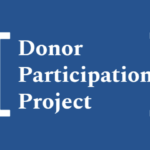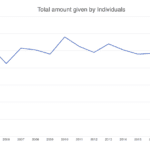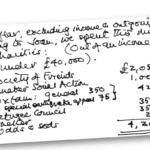Face to face and email – where might they fit together?
books have been part of my office furniture since I first discovered his work on persuasion and compliance on a trip to the US. Much of his thinking went into developing the strategy behind the prospecting campaigns that Bluefrog implemented through Gift for organisations like Oxfam and CRUK.
I’ve just caught up on some work he’s done in the last year with Rosanna Guadagno, which makes for interesting reading.
There’s a long held stereotype that I’m sure most people are familiar with. When it comes to communicating, men are rubbish and women are great. With email at their disposal, men have been further able to retreat into the safety of their cave. If they can avoid speaking to someone a few feet away by emailing them, they’ll grab the chance with both fingers.
But how does this relate to fundraising, particularly in a face-to-face context?
Back in 2002, Guadagno and Cialdini looked at how people act out expected social roles. Men are supposed to be task-oriented whereas women are relationship-oriented. So, when put in a face-to-face situation, women tend to follow the cultural stereotype. Similarly, as men are often viewed as more competitive, when they face another man they tend to be less open to persuasion.
What their research suggested is that email allows men to avoid this competitive show of force and be more open to persuasion
But this research doesn’t take into account currently existing relationships or the water muddying aspect of sexual attraction. So in 2007, Guadagno and Cialdini repeated their experiments with a focus on what they describe as “oneness”.
“Oneness refers to the idea of an interconnected identity. The closer two people feel, the more helping the other person is like helping themselves. So oneness can promote altruistic behaviour. Oneness can also be seen in terms of the classic in-group out-group dichotomy in social psychology. People show a positive bias towards other people who are in the same notional group as themselves: e.g. work colleagues.
“Oneness was very simply manipulated in Guadagno and Cialdini’s study by encouraging strangers to view each other in one of two ways. In the first manipulation two strangers were shown fictional results of a questionnaire they had completed which showed they had identical personalities. In the second, the fictional results showed they had completely different personalities. In this way, the first groups ‘oneness’ was encouraged, while in the second it was discouraged.
“Then, as had been done in the previous study, participants attempted to persuade each other.”
The results showed that when “oneness” was low, email was a much better means of communication for men. Conversely women with high levels of “oneness” had very persuasive encounters.
In short, this means that men tend to be less competitive over email and are better able to concentrate on arguments presented, rather than being distracted by seeing the other man as a threat. Women, on the other hand, may not generally be easily persuaded over email because there is less opportunity to form relationships from which attitude changes can be built.
What does this mean for fundraising?
Well, speaking to street fundraisers, you can see a real difference in their attitudes to recruiting people who are different from themselves. The most obvious expression of this is that young people tend to recruit young people. They don’t have much “oneness” with 65 year olds, so they rarely get recruited.
However, there seems to be a lack of “oneness” when it comes to men recruiting men. Often the reticence is on the part of the recruiter rather than the prospective donor. And it becomes more comfortable (and fun) to develop a conversation where sexual attraction plays a role – which often leads to a focus on members of the opposite sex. The fact is though, such relationships last for little more than a few minutes and don’t result in any kissing and cuddling in the back row of the cinema. Which could leave the new donor feeling a little deflated.
Maybe if there was a focus on developing a sense of “oneness” rather than using sexual chemistry at the onset of the conversation we could see a reduction in attrition. Perhaps one of the most potent tools of this technique needs to be a little better managed to make face-to-face more effective.
All that we need then is a means to reinforce the decision, perhaps online – where men seem to be more open to persuasion – and that’s what I’ll be blogging on soon. Because an email is of no use if someone doesn’t read it!









